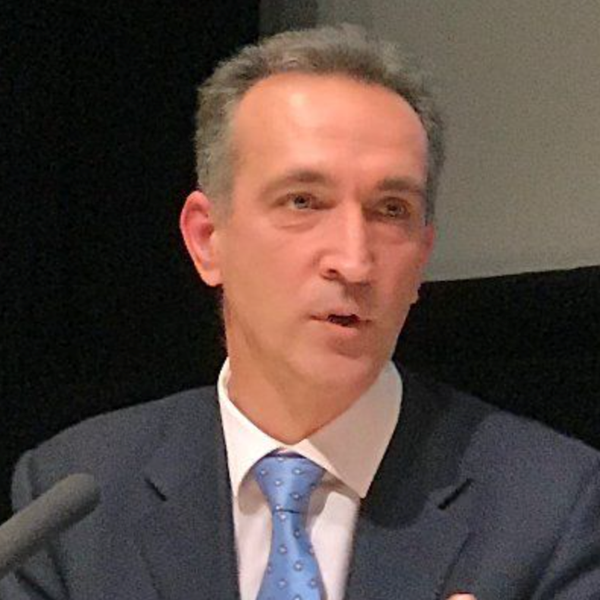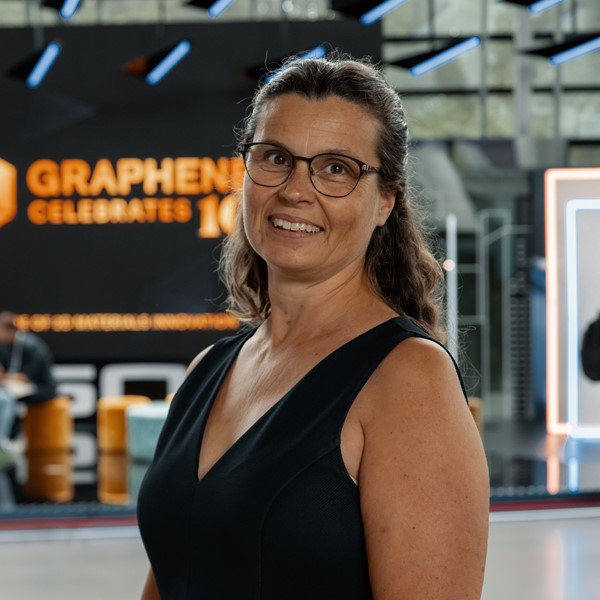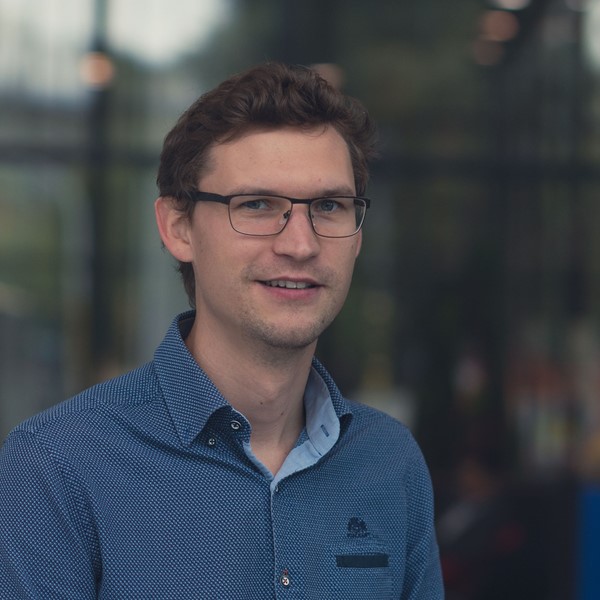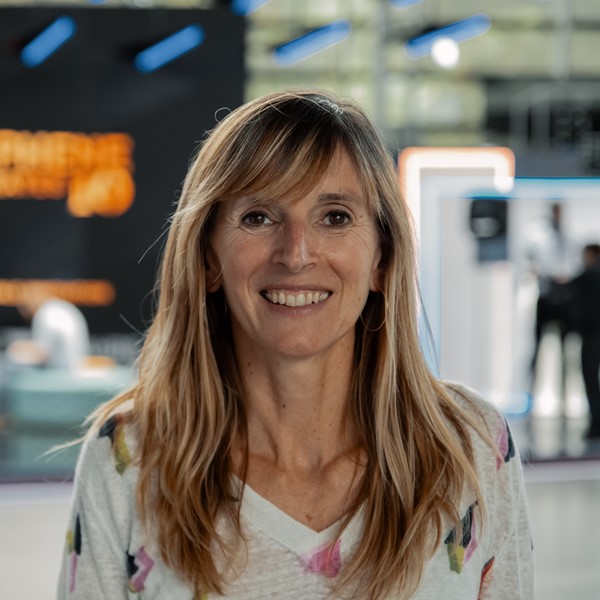Graphene Week 2023 Speakers

Keynote & Plenary Speakers

Vincenzo Palermo
The National Research Council of Italy, Italy
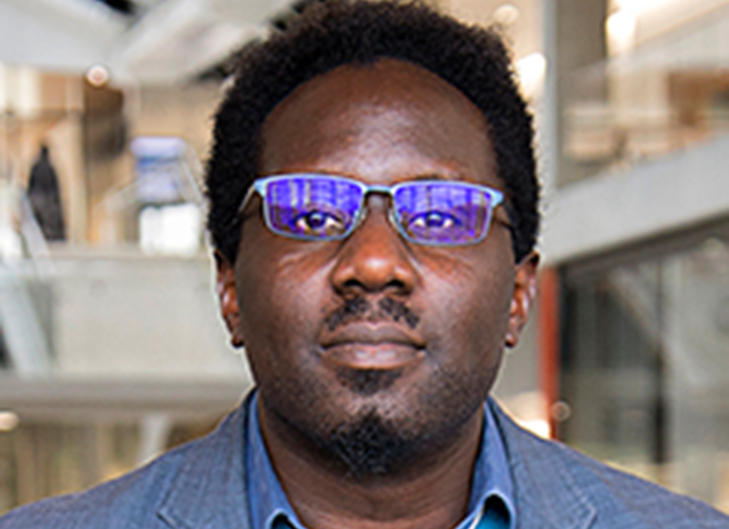
Deji Akinwande
University of Texas, USA
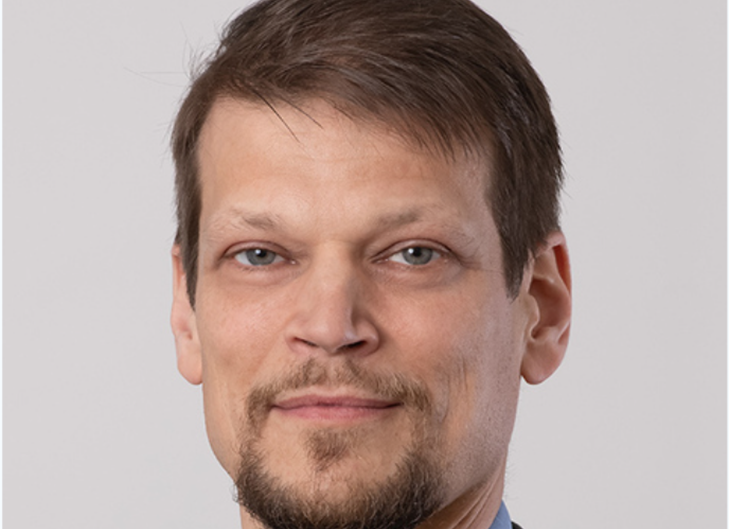
Tibor Grasser
TU Wien, Austria
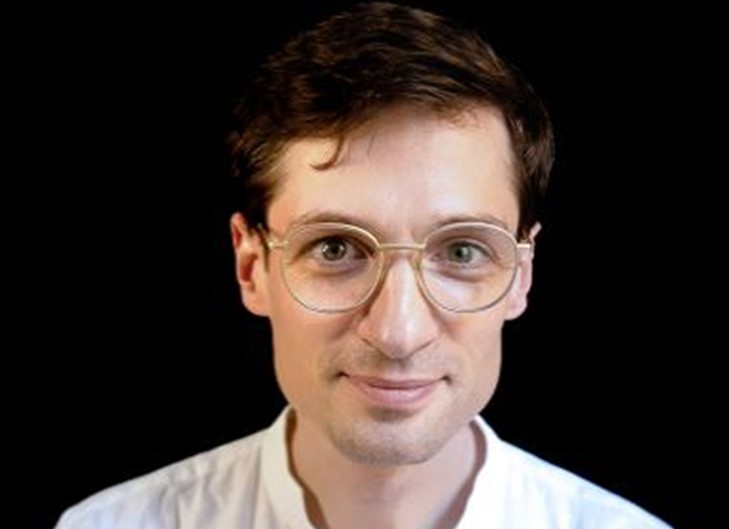
Daniel Schall
Black Semiconductors, Germany
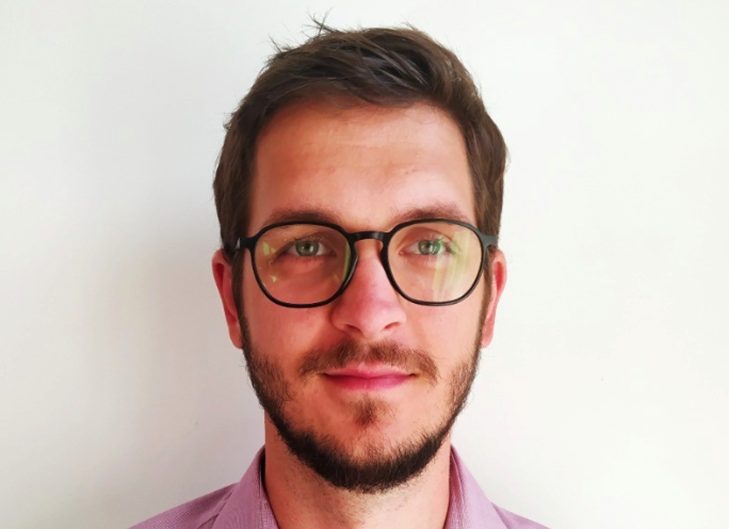
Martin Rejhon
Charles University, Czech Republic

Walter De Heer
Georgia Institute of Technology, USA

Kyriaki Polychronopoulou
Khalifa University, UAE

Alba Centeno
Graphenea Semiconductor, SL, Spain

Gianluca Fiori
University of Pisa, Italy

Håkan Tinnerberg
Sahlgrenska Hospital, Sweden

Kostas Kostarelos
The University of Manchester, United Kingdom

Xuehang Wang
TU Delft, The Netherlands

Andrea Ferrari
The University of Cambridge, United Kingdom

Luigi Colombo
University of Texas Dallas, USA

Carolina Aguilar
INBRAIN, Spain

Georg Duesberg
University of the Bundeswehr Munich, Germany

Stephan Roche
Catalan Institute of Nanoscience & Nanotechnology / ICREA, Spain

Huanyao Cun
University of Zurich, Switzerland

Sanna Arpiainen
Infineon Technologies / Aalto University, Finland

Ermin Malic
University of Marburg, Germany

Salim El Kazzi
AIXTRON, Germany

Daniel Carriazo
CIC, Spain

Delphine Pommier
Thales Research & Technology, France

Alejandro Criado
The University of A Coruña, Spain

Manuela Melucci
The National Research Council of Italy, Italy

Jong-Hyun Ahn
Yonsei University, South Korea

Jari Kinaret
Graphene Flagship Director, Chalmers University of Technology, Sweden
Innovation Speakers

Kari Hjelt
Chalmers Industriteknik

Letizia Bocchi
Medica

Stijn Goosens
Qurv Technologies

James Baker
GEIC

Fabien Dezitter
Airbus

Francesco Bonaccorso
BeDimensional
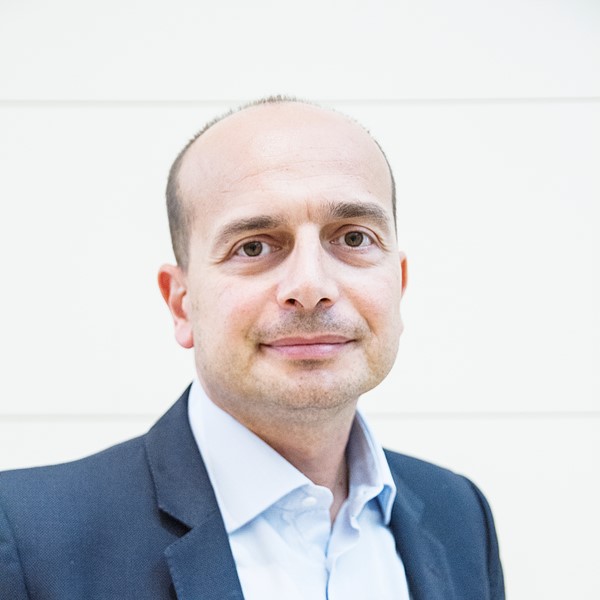
Vincenzo Palermo
CNR

Anna Andersson
ABB

Carolina Aguilar
INBRAIN

Burcu Saner Okan
NanoGrafen

Johan Ek Weiss
CIT

Henning Döscher
Fraunhofer Institute for Systems and Innovation Research ISI
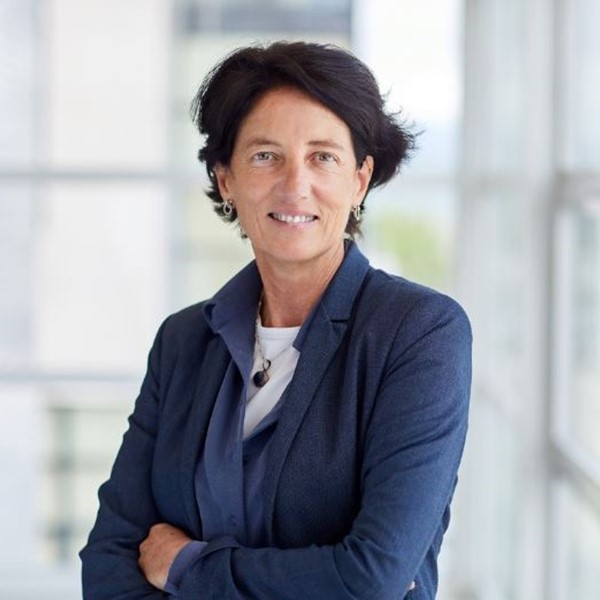
Isabel Obieta Vilallonga
European Innovation Council

Norberto Patrignani
Politecnico di Torino
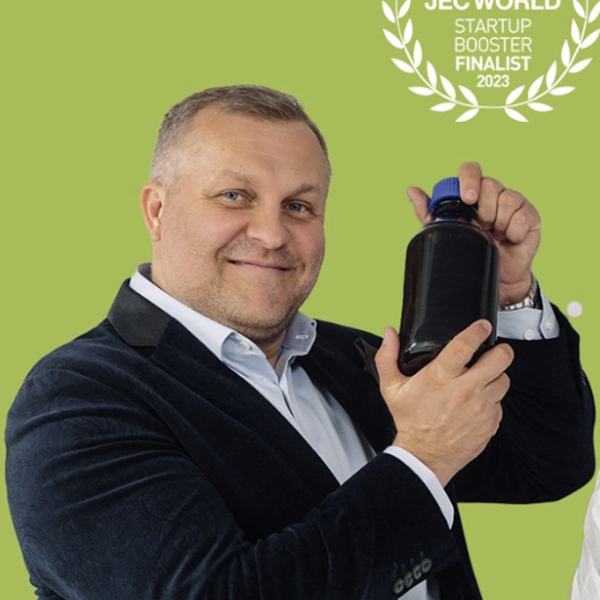
Erik Khranovskyy
Grafren

Mamoun Taher
Graphmatech

Anna Carlsson
Bright Day

Michael Kissner
Akhetonics

Ali Shaygan Nia
Technische Universität Dresden — TU Dresden

James Baker
TEMASOL
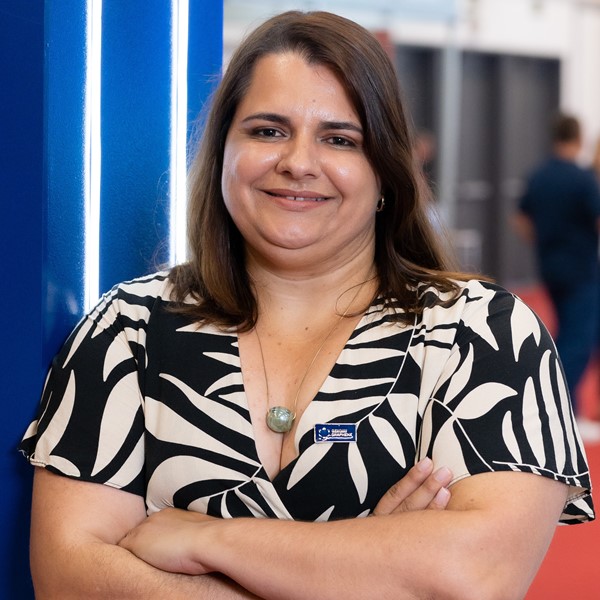
Valdirene Sullas Teixeira Peressinotto
Gerdau Graphene

Christian Werdinius
Provexa

Dan Xu
National Ningbo Graphene Innovation Center, China

Alan Colli
Emberion, Finland

Arne Quellmalz
In2Great Materials
Bio: Letizia Bocchi, is the laboratory manager of Medica SpA, an Italian biomedical company (www.medica-spa.com) specialized in the manufacturing of filters and membranes for water and blood purification. She studied Biotechnology at University of Modena and Reggio Emilia, where she worked as research fellow between 2004 and 2006 on genetics of dyslipidemias. She obtained her PhD in Biochemistry, Biotechnology and Molecular Biology at Ferrara University in 2010. She joined Medica in 2010 as a member of the R&D group about membrane and filters. She made courses in Intellectual Property, and she manages also the IP of Medica Group. She built up the laboratory of Medica, that grew over years in instrumentations and skilled personnel. Since 2015 Letizia started the collaboration with CNR and together with them the work on water purification from emerging contaminants. Since 2020 she also coordinates Graphil Project and since 2021 she’s the coordinator of LIFE REMEMBRANCE funded project.
Title: GRAPHIL UPDATE AND PERSPECTIVES
Abstract: The 3 years of work of Graphil brought a concept from the ideation to the manufacturing real possibility. The hollow fiber manufacturers Medica and Polymem, that in the beginning could provide prototypes and small amount of fiber enriched with graphene, have set up a manufacturing process with equipments specifically designed to produce composite PSU-GO and PVDF-GO hollow fiber. In parallel with the scaling up of the manufacturing process the academic partners collected a huge amount of data and tests on the composites and prototypes provided. These results regarding mainly performance highlighted that the composite fiber acquires for sure an adsorption capability thanks to graphene especially towards ciprofloxacine, a mix of 8 emerging contaminants, PFAS, Pb. The formulation and standard material for Medica composite was the PSU-GO 3.5% that showed very good data at lab scale but then when starting at real flowrate and real size filters show a quick drop in performance after hundreds of liters of water treated, while the target is still thousands of liters. Thus, thanks to the upgrade and upscale of the manufacturing process a new formulation has been created with PSU-GO 10%. This is currently under testing, and it is expected that a sensible increase in adsorption capacity will be reached.
After Graphil end the work of Medica on the composite of Hollow fiber and GO is not ended at all; Graphil gave the opportunity to build up a versatile platform for the incorporation of GO in the production process that can open many opportunities of commercial exploitation.
Bio: Dr. Stijn Goossens is CTO of Qurv and a pioneer in wide-spectrum image sensor technologies based on colloidal quantum dots and/or 2D materials. He is inventor of multiple patents in Qurv’s portfolio. He obtained his PhD from Delft University of Technology and continued his career as a program manager at the Institute of Photonic Sciences before founding Qurv in 2020.
Title: SPEARHEAD 8: AUTOVISION
Abstract: Semi-autonomous driving has the potential to prevent up to 90% of car collisions every day. It can ease traffic congestion in mega-cities and reduce carbon emissions. However, low visibility conditions such as fog, rain, snow, bright sunlight and darkness hinder the uptake of autonomous driving. Infrared cameras can provide advanced driver assistance systems with the ability to operate under these adverse conditions.
Proof of concept cameras enhanced by 2D materials have shown high performance in the infrared spectrum, but their current manufacturing methods are unattractive for industrial adoption due to the high costs involved. The scientists and engineers in the AUTOVISION project are developing a scalable graphene integration process. The process is developed on similar tools used in existing semiconductor foundries. This waferscale process could lead to high volume production and enable an excellent cost/performance ratio for infrared image sensors.
This talk will provide an update on the latest progress in the project. We will report on the status of the 200mm waferscale back-end-of-line integration of graphene field effect transistors for enhanced infrared image sensor technology. Furthermore, we will discuss the challenges and opportunities arising from the AUTOVISION project.
Bio: James joined the University of Manchester after 25 years in Industry where most recently he was Vice-President of Technology Collaboration Programmes and Managing Director of the Advanced Technology Centres for BAE Systems in the UK.
As the CEO Graphene@Manchester, which includes the business responsibilities for the National Graphene Institute (NGI) and the Graphene Engineering Innovation Centre (GEIC), he is leading on the creation of the graphene industry ecosystem in Manchester and developing the industrial partnerships and collaborations to accelerate the commercialisation opportunities for graphene and 2D materials.
Title: Creating a graphene ecosystem between academia, industry and supply-chain – the opportunity for start-ups and SME
Abstract: Graphene@Manchester through its National Graphene Institute (NGI) and the Graphene Engineering Innovation Centre (GEIC), has now lead to the creation of over 50 start-ups and over 200 SME’s working on graphene products and applications. What has been achieved and how do we leverage this model across materials innovation and across international partnerships and collaborations.
Bio: Fabien Dezitter has been Icing expert @ Airbus Helicopters since 2018. He is graduated from the ESEM French engineering school (Ecole Supérieure de l’Energie et des Matériaux) and is specialist in Icing, Ice Protection and Ice Detection. He worked at Airbus Commercial Aircraft from 2002 to 2016 as, in particular, Airbus Icing & Ice Protection System R&T Coordinator (2010-2016), Coordinator of the CSA WEZARD project (FP7, WEather haZARDs for aeronautics, 2011-2013) and Coordinator of the large integrated HAIC project (FP7, High Altitude Ice Crystals, 2012-2016). He joined Airbus Helicopters in 2016 and coordinate the SH10 GICE (Graphene-based, Thermoelectric Ice Protection System) within the EU Graphene Flagship.
Title: Graphene-based Thermoelectric ICE Protection System, towards a more versatile and easier to integrate heater mat technology
Abstract: Electro-thermal ice protection systems (IPS) play a major role in next generation aeronautical products:
- Bleed-air-based IPS have a number of drawbacks, among which the incompatibility with polymer/composite structural components due to too high temperature of the air
- Current heater mat may suffer limitations to adapt to power density requirements or for integration into complex 3D-shaped components
- For next-gen aircraft (A/C) components like wings, rudder, rotor blades, air inlets, antennae, windshield, new easy-to-integrate and versatile ice protection technologies are needed; versatile relates to the ability to adapt to the requirements in terms of geometry, generated power density, and available on-board voltage supply
- Environmental aspects (lower power consumption & emissions – CO2/NOx) are a key driver
Based on the work performed by various partners of the Graphene Flagship, the aim of the GICE spearhead is to advance graphene based heater mat technologies to higher maturity and to develop technology demonstrators. The selected demonstrators are components that must be protected during flight in icing conditions:
The presentation will report on the progress towards this objective.
Title: Metal replacement for automotive: an example of translational technology within the Graphene Flagship
Abstract: Since its inception in April 2020, the G+BOARD spearhead project of the Graphene Flagship has been working to replace the copper wiring and buttons currently used in car dashboards. G+BOARD objective is to reduce the number of production steps involved in manufacturing dashboards and decrease vehicle weight, while also improving aesthetics, quality and recyclability.
We have used the properties of graphene related materials (GRM) and the know-how developed in the Flagship to develop two applications: a steering wheel whose heating elements make use of GRM; and a dashboard drawer using GRM for sensing and wiring capabilities.
In the last years, we have optimized the inclusion of GRM in industrial polymers already used by Stellantis, and developed new ways to include electric functionalities in such composites, using laser patterning of the composites to modify and activate the GRM in them. The results have been very positive, and allowed to move from the lab scale to industrial tests.
Small series production has been done in the Stellantis Plant, realising glovebox drawer components that will be used for the final validation phases and for the final demo production. The new technologies will be integrated into a concept car for Stellantis vehicles. The car’s introduction to the market will be linked to the development timeline of a new vehicle.
As a result, final prototypes are in development in collaboration with Tier 1 and Tier 2 suppliers with the aim of releasing a product customisable for specific automotive models by the end of the project.
Title: Maintenance-free Circuit Breakers for Smart Power Transmission and Distribution Systems - Summary and outlook of Spearhead project CircuitBreakers
Abstract: Power distribution grids are evolving rapidly. This evolution puts higher demands on switching devices that protect the grid, e.g., circuit breakers and switches, including longer lifetimes, higher current ratings, fewer service intervals, etc. Organic grease is used to lubricate the mechanical drive systems of these components. However, grease ageing and subsequent loss of lubrication of the drive system, constitute obstacles to this evolution and are currently one of the main failure modes for these devices.
It has been the joint target of the partners within Spearhead project CircuitBreakers to demonstrate that graphene in the form of novel self-lubricating metal-graphene composites can replace lubricating grease in low-voltage air circuit-breakers and thereby improve performance and robustness, and ultimately altogether remove the need for maintenance (regreasing) of these devices.
A multilayer coating solution, consisting of metal- and metal-graphene sublayers has been developed and verified, first on lab level and then on technology-demonstrator level. The coating solution is based on a cost-efficient and industrial-scale electroplating process. The talk will provide a summary of the project, showing the accomplishments, especially regarding the upscaling of the electroplating process and the tribological and corrosion performance of these coatings. Furthermore, we will discuss the challenges and opportunities that the project CircuitBreakers has generated, with respect to the commercialization of maintenance-free circuit breakers.
Bio: Assoc. Prof. Dr. Burcu Saner Okan received BS degree in Chemistry at Middle East Technical University, Turkey in 2005. Dr. Saner Okan received MS degree in 2007 and PhD degree in 2011 in Materials Science and Engineering programme at Sabanci University. Dr. Saner Okan is an academic director of Sabancı University Composite Research Center since March 2022, and also a research faculty member at Materials Science and Nanoenginnering and Manufacturing technologies at Sabanci University since 2017. In addition, Dr. Saner Okan is co-founder of NANOGRAFEN Nano Technological Products Company. Dr. Saner Okan develops cost-effective and lightweight automotive composites parts reinforced by waste tire-derived Graphene NanoPlatelet with part producers and leading OEM partners. Dr. Saner Okan has an expertise in graphene, polymer nanocomposites, compounding, surface chemistry and electrospinning, recycling and upcycling, circular economy. She has more than 50 articles published in international journals, 8 book chapters, 2 patents and more than 50 conference papers in these fields.
Title: Graphene manufacturing from waste tires towards thermoplastic sector
Abstract: The disposal and management of end-of-life tires have been a significant global waste problem for many years. The improper handling of used tires has led to environmental and health hazards, including tire fires, toxic emissions, and the creation of breeding grounds for disease-carrying insects. To address these challenges and improve the recycling rates of end-of-life tires, governments and environmental organizations need to collaborate with the private sector to invest in better recycling infrastructure and create incentives for recycling initiatives. Despite the challenges, the concept of graphene production from waste tires holds great potential for addressing both waste management and graphene supply issues. Herein, Nanografen provides a viable and sustainable solution for pyrolysis process of waste tires by combining upcycling technology and develops a feasible and scalable technology for mass production of graphene by lowering manufacturing costs. Nanografen addresses the thermoplastic market by serving a multifunctional additive in compounding process. Nanografen creates a value chain by supplying graphene to compounder and working with Tier 1 and OEMs. One of the solid achievements of Nanografen is becoming an official supplier of Renault together with Ravago with the developed PP based graphene masterbatches. Also, this graphene is validated by one of the global white goods companies, Arçelik, and they will start to use in washing machine with full recycled part formulations. Consequently, graphene-based lightweight composites held significant promise for revolutionizing the automotive industry and thermoplastic sector by improving part performance, efficiency, and sustainability. This multidisciplinary work provides more widespread adoption of graphene composites in plastic composite design and manufacturing.
Bio: Johan Ek Weis is the task leader for standardisation within the Graphene Flagship. He is also the Chair of SIS TK 516 Nanotechnologies, which is the Swedish mirror committee of ISO 229. After several years as an academic researcher (MSc, PhD and postdocs) in five different countries studying graphene and carbon nanotubes, he started focusing on taking graphene from the lab to the industry in 2015. He has helped numerous companies using graphene and is part of the program office of SIO Grafen. SIO Grafen is a Swedish strategic innovation programme which has involved 200 organisations in innovations with graphene. He holds a MSc from Chalmers University of Technology and a PhD from the University of Edinburgh.
Title: Graphene Standardisation
Abstract: Standards play an important role in taking new technologies or materials from university labs to factories and into new products.
A lot of work has been done on graphene standardisation within the international standardisation bodies ISO and IEC and also by the Graphene Flagship. I will describe the current status of standardisation of graphene and other 2D materials. What is happening now and what is already in place?
This presentation sets a starting point for discussing the future of standardisation of graphene and other 2D materials during the workshop on Thursday afternoon.
Bio: Dr. Henning Döscher is a project manager and senior researcher at the Emerging Technologies department of the Fraunhofer Institute for Systems and Innovation Research ISI in Karlsruhe, Germany, since 2017. His work at Fraunhofer ISI focuses on innovation systems investigations on novel materials and technologies. Through his participation in several national and international research projects, he gained insight into innovation and diffusion of Industrial Technologies. Henning published numerous articles in peer-reviewed journals on diverse topics in materials science, semiconductor physics, surface science, solar energy, and (photo-)electrochemistry. Among other projects, Henning currently contributes to the Graphene Flagship Project, where he coordinates the Technology and Innovation Roadmap process. He studied Physics (and Physical Technologies) as well as Business Information Systems at TU Clausthal, including research visits to UW Madison (WI, USA), to NCSU Raleigh (NC, USA), and to Cairo University (Egypt). In 2006, he joined Helmholtz-Zentrum Berlin (former Hahn-Meitner-Institut) and received his doctorate from Humboldt-Universität zu Berlin in 2010 based on a thesis on III-V heteroepitaxy on silicon substrates. Based at TU Ilmenau, he received a Marie Curie International Outgoing Fellowship from the European Union, which enabled him to research the generation of solar fuels at the National Renewable Energy Laboratory (CO, USA) and to return to Philipps-Universität Marburg.
Title: Graphene technology and innovation roadmap (TIR) process
Abstract: The graphene TIR process explores pathways towards the industrialization of graphene and related materials (GRM) by exploring their impact on the formation and transformation of future value chains. The presentation outlines the scope goals of the graphene roadmap in the context of its history, present status, and projected future. Beyond application specific innovation interface roadmaps, the combined TIR results paint a detailed picture of the status and prospects for overall GRM industrialization.
Bio: Isabel obtained a Master Degree in Physics (Semiconductor Physics) from the University of the Basque Country (Spain) and subsequently, earned a Doctoral Degree in Science (Microelectronics-Materials for Sensors) from the University of Navarra (Spain).
She started her career at AT&T Microelectronics transferred to AT&T-Bell Laboratories (USA) in the field of modelling and simulation of electronic components. Back in Spain, she joined one of the leading manufacturers of Power Discrete components, as an R&D Engineer and later, became Manager of Engineering and Production of the Wafer Fab, what gave her a wide picture of the microelectronics industry. At that position, she started her links with the European Commission as the representative of the group in Eurimus (Eureka Initiative for promotion of microsystem uses) Technical Committee.
Several years later, Isabel transitioned to Project Management in the field of Materials and Microtechnologies for Electronics in the largest technology center in Spain, Tecnalia, where she has initiated, managed and coordinated several new initiatives like the Nanotechnologies Program or the Printed Electronics Platform. She has also been Director of several Business Areas leading their market-technology and IP strategy. During all those years, she has been managing a large portfolio of European and private projects in the field of Micro-Nanofabrication, Functional Surfaces, Sensors and Printed Electronics.
All along her career, she has combined her job with activities as expert in innovation by performing Technology Due Diligences, evaluating new business opportunities for Venture capitals and Family offices or as Innovation Radar Expert for EU projects. She holds a title in Expert in Management of Innovation and Technology from Deusto Business School.
In September 2022 she joined the European Innovation Council as Programme Manager for Sustainable Electronics.
Title: Investing in Tech Entrepreneurship in Europe - EIC Funding opportunities
Abstract: Europe’s most ambitious innovation initiative is a €10 billion programme to identify, develop and scale up breakthrough technologies and disruptive innovations in Europe
It is unique in the world to combine research on emerging technologies with Accelerator for startups, SMEs and scaleups. The EIC Fund is the largest VC deep-tech investor in Europe.
A pro-active approach with flexible funding is the way the EIC is led with an important role of the Programme Manager. The programme manager for Responsible Electronics will give examples of projects in the 3 instruments: Pathfinder, Transition and Accelerator of interest for the 2D materials ecosystem and will explain the challenges proposed to lead to novel research in fields related to sustainability in electronics.
Abstract: Ethics is usually considered a separate field from science and technology, or it is considered just a brake or a nuisance for real projects and activities related to research and innovation. Indeed any artifact can be seen as a "socio-technical system", since technology and society co-shape each other. Also, the EU defines Responsible Research and Innovation as "scientific research and technological development processes that take into account effects and potential impacts on the environment and society". In the case of Graphene, what are the main questions for researchers and developers that could enable even better projects and applications?
Bio: Born 1979, graduated Chernivtsi National University in 2001. He was a PhD student at the Institute for Problems of Materials Science in Kyiv, Ukraine in 2002-2006 and received his PhD in Solid State Physics in 2010. During 2004-2017 he was a visiting researcher and postdoc at Univerity of Oslo (Norway), Linköping University (Sweden) and University of Lissabon (Portugal). Since 2010 he was a postdoc at the Department of Seminconductor Materials and the Institute for Physics, Chemistry and Biology at Linköping University, and obtained the position of Assistant Professor in 2017. He is author of more then 80 articles and 4 patents, with Hirsch index of 26. In 2018 he established Grafren AB company and is 100% working on the development and commercialization of the graphene based products.
Title: Nanoscale integration of graphene flakes into the fibres based materials – reasons, features and the market potential
Abstract: Grafren AB started work on development of graphene based products early in 2018, with a specific focus on the material quality and particular dimensions of the graphene flakes. We have accumulated extensive experience in the nanoscale coating and integration of the graphene into other materials, changing and upgrading their properties. Specific focus that we have at Grafren is coating of the fibres based materials, such as textiles and fabrics. It was a bumpy journey with several failed products as well as several successful ones. In the presentation I will tell about the important aspects of the material quality, critical for successful product developments, will give an example of the projects that Grafren has successfully performed and products that we have successfully delivered and are delivering to the market. This includes fabrics with specific functions such as electrical heating, shielding and well as fire resistance. Importance of the clear value for the customers combined with the perfect product to market fit will be the focus of my presentation. At the end, I will share our planes for the future projects and potential products, which Grafren AB can enable.
Bio: Mamoun is a distinguished deep tech entrepreneur and award-winning founder, currently serving as the CEO and CTO of Graphmatech in Sweden. He leads a passionate and high-performing team, leveraging the power of graphene to enable and accelerate the green energy transition. Mamoun is driven by a passion for solving complicated challenges through innovation and leadership and converting technical breakthroughs into commercial values.
Title: Beyond the Hybe: Real-Life Challenges and Perspectives in Graphene Commercialization
Abstract: Is the path to commercialize technical breakthroughs from universities and research institutes straightforward?
Are researchers equipped for this transition?
How pivotal is the ecosystem in propelling deep tech solutions into the market?
While investment is acknowledged as influential, what other dynamics significantly affect the success of DeepTech startups?
This abstract explores the complexities of commercializing technical breakthroughs from academic and research institutions, focusing on the example of graphene as a pioneering DeepTech innovation with potential applications in green energy transition.
The abstract questions the straightforwardness of this commercialization path and examines the preparedness of researchers for transitioning to entrepreneurship. It emphasizes the role of the ecosystem in propelling DeepTech solutions into the market and discusses the significance of factors beyond just investment in ensuring the success of DeepTech startups.
The abstract underscores the challenges in scaling up graphene technology, including the need to outperform existing solutions, achieve cost-effective production, maintain quality standards, and secure funding. It acknowledges that the process of scaling up DeepTech startups is both time-consuming and costly.
In response to these challenges, the abstract suggests practical solutions. It highlights the importance of collaborative efforts between academia and industry, between SEMs and large corporates enabling the exchange of knowledge and resources as well as the commercial breakthroughs. The concept of cross-continental cooperation is introduced as a means to leverage a shared pool of expertise, especially considering the global imperative of transitioning to green energy.
While acknowledging the significance of capital in supporting DeepTech startup journeys, the abstract also emphasizes the presence of latent drivers that contribute to success. These drivers include fostering an innovation-driven culture, lowering commercialization barrier, promoting interdisciplinary collaboration, building strategic networks, and demonstrating visionary leadership.
Overall, the abstract presents a comprehensive overview of the complexities and considerations involved in taking DeepTech innovations, like graphene, from academia to practical commercial large-scale applications. It stresses the importance of collaboration, cross-continental cooperation, and a holistic approach to addressing challenges beyond financial investment in order to drive the success of DeepTech startups in the context of the green energy transition.
Bio: Anna Carlsson is the CTO of Bright Day Graphene and the inventor of the process to make graphene oxide from lignin
Title: Scaling up Production and Application of Bio-based Graphene Oxide
Abstract: Bright Day Graphene AB is a Swedish start-up that has developed a production method for making graphene oxide from lignin, a residual product from the paper and pulp industry. This gives a graphene material that is biobased and with features that is optimised for energy storage (conductive additive in batteries) and many other applications. In this talk I will tell you more about our material and the road ahead towards scale-up and commercialisation.
Title: The untapped potential of 2D materials in all-optical non-linear photonics
Abstract: While regular software startups can rely on novel business models or market access to stand out, deep tech hardware startups need to have an edge on technology. Silicon photonics has been such an edge over the past 10 years, with many use-cases explored. The use-cases include electro-optical modulation of light, photodetectors, passive waveguides and more, especially ideal for telecommunication and data transfer. However, while possible, exploiting non-linear optical phenomena (such as wavelength conversion and all-optical switching) has been limited, due to the high optical powers they require. This whole avenue of new applications bears an untapped potential for startups, which are waiting for the right photonics platform. We believe that a photonics platform that integrates 2D materials can enable these non-linear applications at scale and provide the second generation of integrated photonics startups with the right tools. In this talk, we want to explore the technology challenges related to these applications, as well as the business and market aspects of 2D materials in non-linear photonics.
Bio: Ali Shaygan Nia is a group leader in the Chair of Molecular Functional Materials at Technische Universität Dresden since 2018 and Max Planck Institute of Microstructure Physics since 2023. He also serves as the Business Developed of Graphene Flagship since 2020. He received his B.Sc in Chemical Engineering (Polymer Technology) from Isfahan University of Technology (Iran) and obtained his Master and PhD in Polymer Chemistry from Martin Luther University of Halle-Wittenberg (Germany). His current interests include the exfoliation and functionalization of emerging 2D materials via wet chemistry methods and the study of their physical properties, the development of functional 2D material inks, pastes, and formulations for printing technologies, and the fabrication of energy storage devices beyond Lithium Ion Batteries (LIBs) such as supercapacitors, dual-ion batteries, and zinc batteries.
Title: Thin, Flexible, and Printable Supercapacitors and Batteries for Active Printed Electronic Devices (FlexPower)
Abstract: Printed electronics are all the rage, mostly passive, i.e., without energy storage devices (e.g., batteries and supercapacitors). However, the market for active battery-powered smart devices, such as active RFID tags, IoT sensors, and smart cards, has grown rapidly (> €100 billion market value, CAGR 10-15%) due to higher security, real-time tracking and updating, and less dependence on reader power, and has led to the rapid growth of the printed and thin-film battery market (CAGR 24%).
Currently, these active smart objects are powered mainly by primary batteries such as Li-MnO2 and zinc batteries. However, these batteries require frequent replacement (6-12 months). On the other hand, thin-film rechargeable lithium-ion batteries (LIBs) require stringent moisture-free manufacturing, which is not easily translated to printing technologies, and their chemistry is often considered hazardous and flammable [1]. In addition, the raw materials for LIBs (e.g., Lithium, Cobalt, Nickel) are on the EU list of critical raw materials, which affects their sustainability.
FlexPower commercializes thin film, printed supercapacitors, and rechargeable zinc batteries based on graphene electrodes and water electrolytes [2,3]. FlexPower's technology is non-flammable and non-toxic, and all components of the device are disposable except for the polymer (e.g., PET) cell housing. In addition, the raw materials are not on the EU list of critical raw materials, ensuring the sustainability and independence of the technology's value chain.
Bio: James Baker is currently innovation manager for TEMAS Solutions, Switzerland. He has worked with the health, safety risks of nanomaterials for the past 10 years; development of new nanomaterials from industrial waste streams, as well asthe practical, industrial application of Safe and Sustainable by Design for nano-enabled products. James Baker is currently innovation manager for TEMAS Solutions, Switzerland. He has worked with the health, safety risks of nanomaterials for the past 10 years; development of new nanomaterials from industrial waste streams, as well as the practical, industrial application of Safe and Sustainable by Design for nano-enabled products.
Title: SAFEGRAPH: Developing a Pathway to Regulatory Compliance for Graphene-based Products
Abstract: Innovators are usually fully focussed on their new scientific and technical developments, including demonstration and validation, whether that is at lab scale, or translating laboratory results into prototypes and economically sustainable and viable products. One often forgotten but essential part of this process is to ensure the regulatory compliance of the new product or development. Following the principles of Safe and Sustainable by Design, awareness of regulation and conformity should be included at the early stage of development. In this way costly non-compliance errors can be avoided.
SafeGraph SH11 was designed to provide support to the Innovators by developing a generalised roadmap of steps which should be followed to ensure regulatory compliance is seamlessly achieved. In order to do this, SafeGraph worked in detail on the following products from four case studies:
Weargraph (C2) Integrated textile-based wearables that can also be used for energy conversion and storage.
Chemsens (C2) A multifunctional plaster sensor based on functionalised graphene, able to detect biological data on human skin.
Graphil (C3): A compact filtration system using polymeric hollow fibre membranes with graphene to remove PFAS and other contaminants.
GICE (C3): a thin mat of Graphene incorporated into the multi-layer upper surface of aircraft wings or helicopter rotor blades for de-icing.
While each case study had unique elements requiring unique regulatory attention, the methodology could be combined into one set of steps and overall approach in order to achieve regulatory compliance. The Legacy of the SafeGraph approach to regulatory compliance is enshrined in the Roadmap which will be made available in the post-Flagship era as a tool for all players working to develop new graphene, GO, and GRM based products, with information disseminated online through partner websites, dedicated webinars and training.
Bio: Head of R&D Partner Programs at Gerdau Graphene, São Paulo, Brazil
Title: Graphene-enhanced industrial applications, Performance Gains and Sustainability
Abstract: Gerdau Graphene is a Brazilian company focused on developing technological solutions based on nanomaterials like graphene for various markets, including polymers, paints and coatings, concrete and cementitious materials, grease and lubricating oil.
Using its own technology, "G2D Technology", to customize graphene and create “plug & play” solutions for the B2B market, Gerdau Graphene develops polymeric masterbatches, mineral additions and chemical additives tailored to its target markets.
At the Graphene Innovation Forum, we will showcase advancements in two of our target markets: PolyG and NanoCons products, for the polymer and concrete industries, respectively.
The development results will be presented, as well as the performance of the products in large-scale industrial tests in our commercial partners, with special emphasis on the relationship between ownership gains and their contribution to the ESG agenda.
Concerning Poly-G, application in flexible polyethylene films will be emphasized. The use of Poly-G enabled the production of thinner films with equivalent or improved mechanical properties compared to traditional polyethylene films, leading to a significant reduction in raw material consumption and reduction in production costs, without compromising the integrity of the final product.
As for the industrial applications of NanoCons, we will present the performance achieved by using the additive in precast concrete systems, with significant improvements in mechanical properties and consequent reduction in clinker consumption in the final product. Moreover, the use of NanoCons allows for process gains and a decrease in water consumption, resulting in competitive advantages for the concrete industry.
In summary, Gerdau Graphene develops plug&play graphene-based products, G2D technology, bringing performance gains to the final product in a sustainable way.
Bio: Christian Werdinius manages R&D at Provexa Technology, a company specializing in chemical analysis, corrosion testing, consultancy, and surface treatment. Affiliated with Provexa ytbehandling, they offer nearly 100 surface treatments for metal and plastic. Christian holds an M.Sc. in chemistry from Chalmers and conducted research in polymer and surface science at TU Dresden. He later explored nanofabrication and earned a licentiate degree in Chemical Physics from Chalmers. He shifted to studying jellyfish water absorption for enhanced salt tolerance of superabsorbers.
With a career spanning since 2004, Christian has worked at Danisco refining sugar production side-streams to valuable food additives and at Swedish Match developing oral indulgence products. Throughout, his focus on surface technology persisted. In 2020, he became R&D manager at Provexa Technology, leading advancements in surface treatment.
Title: Catch-22 in Industrial Upscaling: Overcoming Challenges
Abstract: One of the challenges in scaling up prototype production to the commercial level is the Catch-22 scenario that emerges. Companies investing in industrial expansion seek customer commitments to mitigate risks, while customers require proof of reliable and consistent product quality before committing. This impasse results in a standstill, driven by understandable risk aversion and capital limitations. This issue is even more pronounced for novel techniques and materials, like graphene-related materials (GRMs) and associated products, where raising capital, securing commitments, and embracing risk are critical to transitioning from lab-scale to limited production.
Limited production scaling is often inadequate, particularly when potential clients, such as the automotive industry, demand substantial quantities before product evaluation. Similar challenges exist in GRM raw material production, as potential high-demand sectors like battery manufacturing hesitate due to insufficient GRM production capacity. This creates a Catch-22 situation: GRM producers cannot construct large factories without assured demand, while potential customers are reluctant without guaranteed supply.
This predicament partly explains the scarcity of widely adopted GRM products. Public funding can provide some relief, as demonstrated by the ongoing Vinnova-funded GAIA project at Provexa Technology. Here, we're developing an electrophoretic surface treatment process to deposit polymer/GRM composite films on metal or plastic, enhancing electromagnetic wave absorption for EMC applications and surface protection. Our objective is to scale up to a small automated production line, enabling comprehensive quality assessments during continuous production. Ultimately, this will empower potential clients to coat substantial components, not just test samples, for real-world application trials.
Bio:Dr Dan XU has versatile experience and expertise in fields of research, research management, and industry development & promotion. She received her doctoral degree in material chemistry from State University of New York(SUNY)at Binghamton in 2010. She joined NGIC since 2022 April, and is responsible for human resources, operational management, international communication and cooperation etc. She was senior research manager in University of Nottingham Ningbo China (UNNC) from 2017 Sept. to 2022 March. At UNNC, she supported several research platforms to be granted in provincial and municipal level and organized series activities such as University Open Day, workshop of New Generation Artificial Intelligence and Advanced Manufacturing, and Innovation Events. Before Dan joined UNNC, she has 7-years working experience and expertise in regional economic operational analysis, industrial enterprise development and industrial planning formulation as a government officer.
Abstract: The talk will be delivered with title of “Progress and Challenges of Graphene Commercialization in China”, includes the main content of PART I Overview of Graphene Industry Development in China which covers graphene industry policies, layout, graphene production capacity, applications/products, investment status, and common problem for industrializations in China, and PART II Introduction of National Graphene Innovation Center(NGIC) of China including the foundation background, capabilities, facilities, targets, organization structure, operational management team, tech roadmap and industry services of NGIC and China Innovation Alliance of the Graphene Industry (CGIA).
Bio: Dr Colli is a device scientist, graduated in Physics from the University of Trieste (Italy) and was subsequently awarded a Ph.D at the University of Cambridge (UK). He later worked at Nokia Research Centre, focussing on a portfolio of nanotechnologies including graphene. Alan was among the founding members of Emberion, where he leveraged his broad experience in optoelectronics for imaging applications. He filed more than 30 patents and contributed to several demonstrators and products development, leading the prototyping task for the optoelectronics work package in the ramp-up phase and the technology-focussed tasks of the GBIRCAM Spearhead Project in Core 3. His major expertise is to solve complex technical challenges, both at fundamental and system integration levels.
Title: Multi-band imaging with CMOS-integrated graphene photodetectors
Abstract: Hyperspectral imaging is fast becoming the next technological leap for an increasing number of applications relying on augmented vision systems. Of particular interest is the simultaneous detection of light in all the atmospheric transmission bands – visible (VIS), near-infrared (NIR), short-wave (SWIR), medium wave (MWIR) and long-wave infrared (LWIR). A set of independent cameras can be assembled for this purpose [1], but results in significant size, weight, power, and cost burden. There is a pressing need for a new approach that combines multi-band photodetection in a single focal plane array. Because of its unique electronic and optical properties, and its compatibility to build on CMOS, graphene and related materials offer an ideal platform for multi-spectral sensor integration into a single imaging system.
We have developed a range of graphene-based photodetectors to cover all bands of interest from VIS to LWIR, and integrated different technologies side-by-side in arrays of "super-pixels" up to 80x60 in resolution and 160 µm in lateral pitch. We have also developed a read-out integrated circuits (ROIC) platform to interrogate such arrays and generate a real-time image through Emberion's proprietary camera hardware. Strategies to couple graphene with quantum-dots [2,3,4], pyroelectric materials [5], low-bandgap oxides [6], etc., will be reviewed, with particular emphasis on the processes and solutions required for multi-band integration and wafer-scale production capabilities up to 200mm. The latest version of the multi-band camera prototype will be showcased.
This work has been carried out as part of the Graphene Flagship Core3 Spearhead project GBIRCAM.
Bio: Arne is the co-founder and chief executive officer (CEO) of the Swedish start-up company In2great Materials AB. In2great Materials enables the development of future electronics by offering the semiconductor industry solutions for integrating atomically thin materials. Arne earned a Ph.D. in Electrical Engineering from the KTH Royal Institute of Technology (Sweden) with a research focus on photonic microsystems and 2D material integration.
Title: Wafer-level integration of 2D materials for back-end of line applications.
Abstract: Layered materials with thicknesses on the atomic scale (2D materials) promise to revolutionize electronics and photonics. However, without a viable integration technology that leverages established silicon-based infrastructure for manufacturing on an industrial scale, 2D materials will never be used beyond academic research and not deliver the great potential they hold. In this talk, we will present In2great's proprietary integration technology that is a promising solution to this problem.
Open Forum Speakers
Horizon Europe Speakers
EU-UAE Speakers

Kari Hjelt
Chalmers Industriteknik

Hassan Arafat
RIC2D & Khalifa University, UAE

Monserrat Gutierrez
Technology Innovation Institute (TII), UAE

Ammar Jarrar
RIC2D & Khalifa University, UAE

Vincent Bouchiat
Grapheal, France

Burcu Saner Okan
Nanografen Nanotechnological Products Co. & Sabanci University, Turkey

Mamoun Taher
Graphmatech AB, Sweden

Guy Downie
Levidian, UK

Ali Shaygan Nia
Technische Universität Dresden, Germany

Piero Gammara
Istituto Italiano di Tecnologia (IIT), Italy

Abdelqader Abusafieh
STRATA, UAE
Fahad Alabsi
RIC2D & Khalifa University
Bio: Professor Arafat is the Senior Director, Research and Innovation Center for Graphene and 2D Materials (RIC2D) and professor of chemical engineering at Khalifa University in Abu Dhabi, UAE, where he has been working since 2010. He received a Ph.D. and BSc. in Chemical Engineering from the Univ. of Cincinnati (USA) (2000) and the Univ. of Jordan (1996), respectively. He is a recipient of several research fellowships by the US National Academy of Science (USA), the Open Society Foundation (USA) and DAAD (Germany). Through his career thus far, he has supervised 58 postdoctoral fellows and graduate students. His research has been published in 270+ book chapters, journal papers, and conference presentations, in addition to two US patents. He has been invited and delivered more than 60 keynote and invited talks worldwide.
Bio: Director of Self-healing and Nanomaterials (TII) PhD in Materials Science – Ecole Centrale de Lyon
Title: Nanomaterials and the Industry in the UAE
Abstract: The Technology Innovation Institute (TII) is a research institute based in Abu Dhabi, United Arab Emirates. It's a part of the Advanced Technology Research Council (ATRC), which is responsible for defining the strategy and overseeing the execution of R&D in the emirate of Abu Dhabi.
The TII is dedicated to driving advanced research and technology innovation in the UAE and aims to become a global leader in applied research and advanced technology. The institute's objective is to bridge the gap between early-stage academic research and the successful commercialization of viable products.
At the Technology Innovation Institute's Advanced Materials Research Center, one of its specialized research divisions, there is an ongoing expansion of research and development in nanotechnology within the UAE. This growth is fueled by investments across various sectors including renewable energy, advanced materials, water treatment, and healthcare. The integration of nanomaterials is playing a significant role in fulfilling the UAE's objectives of economic diversification, endorsing sustainability, and establishing the nation as a worldwide frontrunner in the realm of advanced technology.
Bio: Dr. Ammar Jarrar is a distinguished professional, currently serving as the Associate Director for Commercialisation at the Research and Innovation Center in Graphene and 2D Materials (RIC2D) at Khalifa University for Science and Technology. With a focus on developing and managing smart and sustainable programs, he is at the forefront of addressing crucial challenges in business development and commercialisation initiatives related to Graphene and 2D Materials.
With a career spanning over three decades, Dr. Jarrar has earned global recognition as a Technical Advisor and Programs Director, demonstrating expertise in integrated water management, program management, business development, stakeholder's management, innovation, R&D, smart cities, and the water industry.
Throughout his illustrious journey, Dr. Jarrar has showcased his versatility in handling diverse program management initiatives. From operational and project management to contributing effectively and managing executive board meetings, he has consistently delivered outstanding results in the development and execution of sustainable programs.
Dr. Jarrar's profound impact extends to the successful formulation of strategic plans and implementation frameworks, leading to the design and realization of pioneering smart cities and water management initiatives. He has been instrumental in delivering highly efficient and effective programs, focusing on sustainable smart cities and innovative water strategies.
An accomplished researcher and prolific writer, Dr. Jarrar has published numerous articles and reports in esteemed journals such as WRR Journal, IAHS, ASCE, IAHR, and IRF. His contributions as an author and contributor to various reports and studies in the field of sustainability and water resources management and planning have further solidified his reputation as a thought leader in the industry.
With an unwavering commitment to advancing technology and sustainable practices, Dr. Ammar Jarrar continues to inspire and lead the way in the dynamic landscape of graphene and 2D materials research and commercialization.
Bio: Vincent Bouchiat is the Founder and CEO of Grapheal, a company spin-off from Neel Institute focusing on bioelectronics and healthcare applications of monolayer graphene. He is on leave from the French National Research Center (CNRS) at Grenoble, where he has a permanent position since 1997. He co-authored more than 110 publications in electron transport in nanodevices with over 7,000 citations and hold 9 international patents. He received the Visiting Miller Professorship Award from University of California, Berkeley in 2007, and the Lee Hsun Research Award from the Chinese Academy of Sciences (2017).
Title: Industrial Scale-up of Graphene sensors with RFID & smartphone readout
Abstract: At Grapheal, we are exploring the industrial use of graphene on biocompatible polymer1,2 to enable simultaneous biosensing3 and tissue engineering4 together with the integration of an RFID component to enable direct connectivity with a smartphone. I will demonstrate our progress in integrating graphene biosensing devices into various consumer applications for on-site diagnostics as well as wearable sensors5.
- Bourrier et al. Adv. Health. Mat. 8 , 1801331, (2019) doi : 10.1002/adhm.201801331
- Veliev, et al., Biomaterials, Elsevier, 86, pp.33−41 (2016).
- Veliev et al. Doi : 10.3389/fnins.2017.00466 (2017)
- Le Gall et al. doi: 10.1101/2021.05.16.444337 (2021)
- https://www.grapheal.com
Bio: Assoc. Prof. Dr. Burcu Saner Okan received BS degree in Chemistry at Middle East Technical University, Turkey in 2005. Dr. Saner Okan received MS degree in 2007 and PhD degree in 2011 in Materials Science and Engineering programme at Sabanci University. Dr. Saner Okan is an academic director of Sabancı University Composite Research Center since March 2022, and also a research faculty member at Materials Science and Nanoenginnering and Manufacturing technologies at Sabanci University since 2017. In addition, Dr. Saner Okan is co-founder of NANOGRAFEN Nano Technological Products Company. Dr. Saner Okan develops cost-effective and lightweight automotive composites parts reinforced by waste tire-derived Graphene NanoPlatelet with part producers and leading OEM partners. Dr. Saner Okan has an expertise in graphene, polymer nanocomposites, compounding, surface chemistry and electrospinning, recycling and upcycling, circular economy. She has more than 50 articles published in international journals, 8 book chapters, 2 patents and more than 50 conference papers in these fields.
Title: Sustainable graphene manufacturing from waste tires and its composite applications
Abstract: Upcycling is a significant concept to bring an end to the life cycle of materials and open various new application routes for nanomaterial production from waste sources. Nanografen provides an insight into the importance of sustainable graphene synthesis methods and aims to reduce the amount of waste being sent to the landfills by developing upcycling approaches of thermoset wastes like tires. When tires are landfilled and just sit under air, they release methane gas into the air, release chemicals to the water and ground and thus alter the ecosystem. Nanografen developed a scalable technology to produce graphene nanoplatelets (GNP) from recovered carbon black obtained from the pyrolysis of end-of-life tires by using recycling and upcycling technology. Nanografen becomes an official supplier of Renault together with Ravago and they developed OEM certified masterbatch to reduce glass fiber and mineral amount in polypropylene and polyamide based interior and exterior parts. The presence of surface oxygen groups directly coming from manufacturing process hinder graphene agglomeration in compounding process and also it acts as a nucleating, compatibilizing and co-reinforcing agent in the thermoplastic matrix and thus keep the mechanical integrity even decreasing main reinforcement in the matrix. Consequently, this technology initiates the mass production by lowering cost from raw material to the selected part and overcomes the needs by addressing greenhouse gas emissions with sustainable designs by integrated manufacturing technologies of injection, overmoulding, and joining techniques. To conclude, Nanografen’s novel and sustainable solution supporting by applying eco-efficient manufacturing technologies and using Life Cycle Assessment provides CO2 emission reduction of at least 10% in each application by adopting eco-design and a circular economy approach.
Bio: Mamoun is a distinguished deep tech entrepreneur and award-winning founder, currently serving as the CEO and CTO of Graphmatech in Sweden. He leads a passionate and high-performing team, leveraging the power of graphene to enable and accelerate the green transition. Mamoun is driven by a passion for solving complicated challenges through innovation and leadership and converting technical breakthroughs into commercial values.
Title: "Innovating with Graphene: Graphmatech's Solutions for a Cleaner and Diversified Future"
Abstract: Graphmatech, a Swedish start-up established in 2017 as a spinoff from Uppsala University, is at the forefront of the advanced materials industry, harnessing the transformative power of graphene technology. With a robust technology platform, the company is redefining possibilities in various sectors by offering specialized materials and cutting-edge solutions that are integral to the global green energy transition.
In a world driven by the urgent need for sustainable solutions, Graphmatech's focus on graphene-enhanced materials has positioned it as a player in the evolution towards cleaner energy sources. The company's innovative products span diverse applications including polymer-graphene materials for hydrogen transport and storage, materials tailored for 3D printing and high-precision industries, as well as graphene technology tailored for battery advancements.
By leveraging advanced graphene materials and modern manufacturing processes, the company works on contributing to the reduction of carbon footprints across industries. These groundbreaking materials not only enhance the efficiency of hydrogen transport and storage but also offer novel opportunities in high-precision manufacturing and additive printing processes, thereby revolutionizing the landscape of sustainable production. The United Arab Emirates (UAE) emerges as a focal point for deep tech solutions adoption. The UAE's commitment to sustainable development and its drive to diversify its economy align seamlessly with the transformative potential of graphene-enhanced solutions. Graphmatech recognizes the immense opportunities presented by the UAE's vision and aims to collaborate closely with local stakeholders through the research and innovation center for graphene and 2D materials (RIC-2D).
In this talk, we will delve into Graphmatech's journey from academia to a pioneering graphene technology force, highlighting its graphene-enabled breakthroughs that are instrumental in propelling the green energy transition. We will explore the diverse applications of the company's offerings, shedding light on the contributions to hydrogen transportation, precision manufacturing, 3D printing, and battery technology. Furthermore, we will underscore the strategic alignment between Graphmatech's innovations and the UAE's sustainability ambitions, showcasing how collaboration can accelerate the adoption of graphene-enhanced solutions and foster a cleaner, more resilient future.
Bio: Guy has spent over 20 years in highly technical sales environments developing bespoke solutions in naval defence, subsea, oil & gas, renewables, and industrial markets. A degree-qualified chemical and process engineer, he began his career as a Graduate with Continental AG in the tyre industry, developing expertise in rubber and plastics. Guy subsequently moved into advanced composites and engineered materials, and later in specialised gas equipment systems with Trelleborg AB.
Guy has significant experience in North America, the Middle East, and Southeast Asia in both direct sales and growth of partner networks for sales and distribution. He joined the Levidian team in 2021 and leads their graphene team where they develop performance enabled materials to help reach NetZero.
Title: Graphene at the cutting edge of decarbonisation
Abstract: Graphene has a wide range of applications that will directly contribute to the decarbonisation of heavy industries like concrete and the enhancement of new energy infrastructure like batteries, amongst other use cases. Levidian’s proprietary production system, LOOP, produces graphene through the decarbonisation of methane. LOOP is a form of permanent carbon capture, producing a unique carbon negative graphene, with very few defects and a low CO2 footprint. Levidian’s first LOOP was deployed remotely at Khalifa University in the UAE in 2022 where it successfully decarbonised methane and produced a high quality graphene called G3.
Levidian has been focused on the development of graphene applications for infrastructure and other advanced materials such as concrete, mortars, paints and coatings, composites and more. Graphene can be used to increase material performance in mechanical, thermal, and electrical properties. In partnership with organisations across the UAE, Levidian is actively exploring routes to commercialise graphene applications that will decarbonise our world.
Bio: Dr. Abusafieh is responsible for advanced materials business at Strata Manufacturing and R&D initiatives within UAE Clusters division of Mubadala. Dr. Abusafieh has over 25 years of industry experience in advanced materials & technology development across multiple industry sectors. His current role also involves supporting investment decisions in emerging technologies relevant to Mubadala Clusters’ growth strategy. His prior US employment includes Drexel University, Composite Optics Inc., Alliant Techsystems (ATK), Cytec, and Solvay. He has co-authored several patents and sits on several management & advisory boards. He led execution of several R&D-sponsored programs from NASA, ARFL, and other government agencies in the US and received various awards.
Title: Enabling Success with Advanced Materials Innovations
Abstract: Advanced materials continue to be a powerful tool for enabling advancement in various applications across many industries including mobility, healthcare, energy, computation & communications. The emergence of 2-D materials such as graphene’s and MXenes in recent years have introduced a new generation of solutions with enhanced performance. This presentation will provide examples of how advanced materials have been used to enable success in various applications and highlight future opportunities with specific eye on UAE’s recent initiatives in this domain.
2D-EPL Speakers
Diversity in Graphene Speakers
Déborah Rupert is a well-being and career coach holding a PhD in biophysics. She founded Dear Academia, an organisation that supports academics to thrive in a healthy work environment. She teaches career planning for PhD candidates at Chalmers University, Gothenburg, Sweden.
Eva Ranehill works as a professor in economics at Lund University / associate professor at the University of Gothenburg. She is a behavioral economist whose research employs laboratory and field experiments and empirical studies with archival register data. A large part of her research has focused on behavioral gender gaps—specifically on the robustness of behavioral differences between men and women, what causes such differences, and their economic implications. Her current research focuses more on the drivers of gender gaps in the labor market. In this work she sutdies, for example, gender discrimination in the academic hiring process, whether, and if so how, male majority environments discourage female entry and female leadership, and whether women may be less effective leaders because they receive less support from followers. She also work on topics in health and environmental economics, with a focus on mental health.
Partnering Division Speakers
Bio: Klaudia Żerańska is an alumna of the Warsaw University of Technology, Faculty of Physics. Since 2014, she has been associated with the Nanostructures Group. Her scientific interests include thermal properties and EMI shielding effectiveness of modern nanocarbon materials in a wide frequency range - from visible light through microwaves to single terahertz. She received her PhD in physical sciences in 2021 with honors, for the thesis entitled "Novel nanocarbon based materials for EMI shielding".
She is an experienced scientist in the field of solid state physics. Her scientific achievements include thirteen scientific peer-reviewed articles, of which she is the corresponding and first author in four; numerous conference presentations, including the Graphene Automotive conference in Detroit, USA and the ESA Workshop on Millimeter-Wave Technology and Applications at the headquarters of the European Space Agency; and research fellowship at the University of Manchester and a postdoc at the University of California, Riverside.
Since 2022 she is a COO of nanoEMI and a CEO of nanoFLAKES (sister company to nanoEMI). Both companies aim to bring to the market a reliable and affordable graphene product.
Title: The road to build the company producing ultimate quality graphene flakes starting out of academic project.
Abstract: The nanotechnology realm is still at the stage where the technical feasibility, repeatability and scalability of the manufacturing processes are the main challenges. It is critical to be aware of major obstacles that one may face when taking a step forward from academic research project toward a successful commercialization. nanoEMI is still on its way to become a market leader; however, the experience we went through could be a good insight to improve the learning curve and comprehensive knowledge of the nano-tech society in the business and engineering fields.
Bio: Filippo Giannazzo (PhD) joined CNR-IMM as a Researcher in 2006 and is Research Director from 2020. He is expert in scanning probe microscopy methods for the characterization of carrier transport properties in advanced materials for micro and nano-electronics (wide bandgap (WBG) semiconductors, dielectrics, 2D materials and heterostructures). From 2016, he coordinated two EU-projects, GraNitE (http://granite.imm.cnr.it/) and ETMOS (http://etmos.imm.cnr.it/ ) on 2D materials integration with WBG semiconductors. He is author of >350 papers with >6200 citations (h-index=42) and an international patent.
Title: ETMOS: Epitaxial Transition Metal dichalcogenides Onto wide bandgap hexagonal Semiconductors for advanced electronics
Abstract: Silicon carbide (SiC) and group-III Nitrides (GaN, AlN, InN and their alloys) currently play a strategic role in energy efficient power conversion, high frequency electronics and optoelectronics. Combining the mature technology of these wide-bandgap (WBG) semiconductors with the outstanding functional properties of 2D materials, such as graphene and semiconducting transition metal dichalcogenides (TMDs), enables the development of advanced device concepts, such us ultra-fast 2D/3D heterojunction diodes and transistors, and solar-blind UV photodetectors.
Within the FlagERA ETMOS project (http://etmos.imm.cnr.it/), from April 1st 2020 to March 31st 2022, the integration of large area molybdenum disulphide (MoS2) with 4H-SiC and GaN has been systematically explored using different scalable approaches, i.e. single and double-step chemical vapour deposition (CVD) [1-3], pulsed laser deposition (PLD) [4], molecular beam epitaxy (MBE), and advanced exfoliation/transfer methods [5,6].
Highly uniform and conformal growth of MoS2 on SiC and GaN has been achieved. A multiscale characterization protocol (based on the combination of micro-Raman, AFM/conductive-AFM, and atomic resolution TEM) has been assessed, to evaluate the number of layers, doping, strain of MoS2, and the current injection at MoS2 heterojunctions with SiC and GaN. Furthermore, the key processing steps (contacts, isolation, high-k dielectrics deposition) for the fabrication of device prototypes based on these heterojunctions have been developed [7]. Finally, MoS2/SiC and MoS2/GaN heterojunction diodes with excellent rectification properties and tunable current injection by tailoring the doping of MoS2 or SiC (GaN) surface have been demonstrated [1-3,4].
Given the high application potential of this research, a dedicated exploitation activity has been carried out, through the engagement of industrial stakeholders in the field of high-power and high frequency electronics. This activity resulted in two joint US patent applications between CNR and STMicroelectronics on advanced diodes and transistors structures based on the combination of MoS2 with SiC [8] and GaN [9].
The scientific results of ETMOS project have been the object of a wide dissemination activity, by publication on peer-reviewed open access journal, the participation to international conferences, and the organization of an EMRS symposium. Furthermore, projects highlights have been included in the Graphene Flagship annual reports.
1] F. Giannazzo, et al., Adv. Mater. Interfaces 9, 2200915 (2022).
[2] S. E. Panasci, et al., Phys. Status Solidi RRL 2300218 (2023).
[3] F. Giannazzo, et al., Appl. Surf. Sci. 631, 157513 (2023).
[4] F. Giannazzo, et al., Adv. Mater. Interfaces 10, 2201502 (2023).
[5] S. E. Panasci, et al., ACS Appl. Mater. Interfaces 13, 31248 (2021).
[6] S. E. Panasci, et al., Appl. Phys. Lett. 119, 093103 (2021).
[7] E. Schilirò, et al., Appl. Surf. Sci. 630, 157476 (2023).
[8] F. Giannazzo, G. Greco, F. Roccaforte, S. Rascunà, “Contextual formation of a junction barrier diode and a Schottky diode in a mps device based on silicon carbide, and mps device”, US Patent App. 17/939,842, 2023.
[9] F. Iucolano, F. Giannazzo, G. Greco, F. Roccaforte, “Enhancement-mode HEMT and manufacturing process of the same”, US Patent App. 18/158,986, 2023.
Bio: Gloria Guidetti is Development Engineer at Tetra Pak (https://www.tetrapak.com), the world’s leading food processing and packaging solutions company. Tetra Pak leads the initiatives of food industry in several fundamental challenges, from continuously optimizing processing and packaging to offering consumers more sustainable products. Having a PhD in graphene technologies and over 10 years of experience in graphene industrial applications, at Tetra Pak she is Materials and Enabling Technology expert and leads the coordination of R&D projects related to graphene.
Title: Interaction between graphene start-up and big industries: the challenges of graphene application in industrial food production.
Abstract: Tetra Pak is a food packaging company leading innovation with a big focus on R&D. Managing product development to meet sustainability transformation demands is a must and material technology is a key to drive this change. From small collaborations to partnerships & ecosystems: example of successful integration between different realities like small graphene companies and graphene challenges in the industrial food sector.
Bio: Prof. Yuri Svirko has worked on nonlinear optics and quantum electronics since 1981 after graduation from Lomonosov Moscow State University (Russia). In 1994-2001 he was working at the University of Southampton (UK) and University of Tokyo (Japan) on nonlinear optics and spectroscopy of nanostructures. Prof Svirko hold professorship in nonlinear optics and photonics of nanocarbon materials in the University of Eastern Finland since 2001. He is the head of the Partnership division of the Graphene Flagship since 2019.
Title: Partnering project DiSetCom: Towards carbon based perfect THz absorbers
Abstract:In the framework of the DiSetCom project we consider fabrication of terahertz (THz) metasurfaces comprising a 3D printed regular array of polymer hemispheres covered with a thin graphitic layer, stacked PMMA/graphene sheets and other structures capable of suppressing the reflectivity to almost zero and of drastic absorptivity enhancement. Scaling up of the proposed techniques makes it possible to tailor the THz response opening avenues towards the fabrication of various THz photonics components.
Textile Workshop Speakers
Bio: Dr. Henrik Sandberg is the Business Development specialist for the focus area of Flexible and Printed electronics of the Graphene Flagship. He is a principal scientist at VTT's centre for Printable and Hybrid Functionalities with a PhD in physics from Åbo Akademi University in Finland. He coordinates work on printed graphene based materials and hybrid integration, specifically targeting flexible applications such as wearable devices. He specializes in device and circuit development as well as the development of analog printing compatible processing techniques from the lab to the R2R pilot scale and on related ink development, in particular on the topics of thin film polymer transistors and circuits, organic photovoltaics and graphene applications.
Bio: Dr Tim Biemelt graduated from the Institute for Inorganic Chemistry I at TU Dresden. He then took a position as process engineer in spinning at Trevira GmbH and supervised the optimization of quality and yield of raw yarns. As RnD group leader he managed long term innovation projects product launches in areas such as innovative new materials including recyclates and bio-based raw materials. Trevira is now part of Indorama Ventures Fibers Germany GmbH where he functions as a Director for RnD filaments.
Title: Graphene based electrically conducting fibres and yarns
Abstract: A brief presentation on the Indorama Ventures PCL company profile and the RnD environment for conductive materials will be given. Furthermore, the presentation will focus on physical characteristics of a newly developed conductive monofilament like yarn and its properties for integration into textiles as well as possibilities for connection to power sources. A classification within the “conductive fibers technology landscape” and possible application fields will be presented.
Bio: Dr. Mykhailo Zhybak is a researcher in the field of nanomaterials, earning his Ph.D. from IMBG NAS of Ukraine in 2019. With a background in electrochemistry of nanomaterials since 2012, he has collaborated extensively with Linkˆping and Lyon universities as a visiting researcher. Driven by an interest in graphene material, his work has evolved to focus on graphene synthesis, dispersion, and groundbreaking applications, notably within textiles and graphene water-based inks. As the Chief Technology Officer at Grafren AB since 2020, he stands as a co-inventor in three global patents, solidifying his reputation as a trailblazer in advanced materials and technological innovation.
Title: How graphene makes textiles conductive - approaches, challenges and opportunities
Abstract: Creating electrically conductive textiles has been a longstanding endeavor within the industry, harboring immense potential for diverse applications. However, traditional methods of achieving conductivity through coatings have introduced undesirable side effects like increased weight, unsustainable additives, allergens, and process & materials incompatibility. This necessitates a novel approach, and graphene material emerges as a promising contender.
Grafren AB has pioneered an innovative technique involving single-layer graphene-based inks and their application in textile coating. The method involves attaching graphene flakes to individual fabric fibers at a nanoscale level, fostering nanoscale overlap to establish an integrated, electrically conductive network within the textile substrate. This network attains a remarkable sheet resistance as low as 10 Ohm/□. Remarkably, the graphene coating's weight remains exceptionally low, ranging between 1 to 3 g/m², setting a benchmark for lightweight conductive coatings in textiles.
Illustratively, this approach distinguishes itself markedly from conventional ink-based solutions, as depicted in the accompanying figure. Such graphene-coated textiles offer transformative possibilities across various sectors. Applications spanning flexible wearables' electrodes and heaters, space electronics' electromagnetic shielding and heat management, de-icing systems for electric aviation, and wind power generators stand to benefit significantly from this innovative paradigm. The potential impact extends to a reduction of up to 99% in coating weight, thereby enhancing cost-effectiveness, and broadening the horizon of industrial possibilities.
Bio: After studying mathematics and computer science at the University of Hamburg and more than 20 years in industry as a system developer, product and project manager and management consultant, Andreas Röpert led the "Wearable Technology Solutions" division of Infineon Technologies AG in 2005 as part of a management buy-in became independent as Interactive Wear AG. He has been a member of the scientific advisory boards of ITA at RWTH Aachen University and TITV Greiz for several years.
Bio: Neil has a BSc in Physics and a PhD in semiconductor material analysis. After completing his PhD his technical career took him to Japan where he worked for four years at the Advanced Technology Research Centre of Nippon Steel Corporation in their electronic materials facility. After returning to the UK in 1995 he joined Europe’s largest printed circuit board (PCB) manufacturing facility in the North East of England. He remained there for more than 10 years, participated in a management buyout and became Technical Director. In 2006 he co-founded Printed Electronics Limited (PEL) which started its operation in Cambridge UK and subsequently moved to Tamworth in the Midlands. Neil is an active member of the global Printed Electronics and wider electronics community and teaches industrial courses on material deposition and printed electronics at highly respected international conferences. He has contributed a book chapter in Inkjet Technology for Digital Fabrication as well as continued industrial collaboration with university partners where he has co-authored papers in the field of additive manufacturing with printed electronics. He has been on the organising committees of a number of international conferences. He has led PEL’s participation in UK and EU projects in the field of printable electronics.
Abstract: PEL has led a work package in WP9 creating a demonstrator for wearable electronics. The demonstrator is a T shirt that contains a high-performance EGC module together with Graphene-based dry electrodes and flexible conductive traces embedded into the fabric of the shirt. In creating the demonstrator it was the aim to produce a well-designed and desirable garment that could have potential after the completion of the project. It has been a challenge to utilise graphene in all areas that were initially envisaged for the demonstrator, especially in relation to printable formulations. In the presentation we will cover the main challenges and summarise the results. The completed T shirt is being shown at the GW event.
The partners in this WP are Interactive Wear and VTT.
Bio: Ting is one of the material and organic electronic experts within RISE AB. Ting identified industrial potential of graphene textile sensor application in medical area together with project partners.
Title: Evaluation of long-term properties of graphene-based textile pressure sensors
Abstract: We have investigated the performances of using graphene based, textile pressure sensors in selected products including hospital mattresses, wheelchair cushions and related accessories. The ability of these type of products to offer a favorable pressure distribution is of great importance, both from a comfort and a health perspective, and by monitoring the pressure between a user and the contact surface, hazardous and/or unpleasant pressure conditions can be more easily discovered and prevented (eg by exchanging the product to a more suitable one or initiating a position change). Hence, such functionalities give large potential benefits, both for the user (health and comfort) and the producers (competitive and thereby commercial benefits). Graphene based sensors offers several advantages compared to alternative sensor materials including large design flexibility, cost effectivity and environmentally friendly. In this project the long-term accuracy and reliability was investigated both in the lab and under real user conditions in the intended application environments. The consortium has graphene sensor manufacturer Grafren AB, the electronics consultant company NEP AB, the medical devices producers Järven health care (medical mattress) and ETAC AB (wheelchair) and another (anonymous) Swedish company. The outcome of the project will facilitate the commercialization of the graphene sensor with identified end-product producers, although more development work is required before commercialization.

Graphene Week 2023 programme highlights
The Graphene Week 2023 programme will feature the latest knowledge within the main research areas of graphene. Our sessions will be divided in multiple categories: research, innovation and inspiration, covering different topics and themes.


